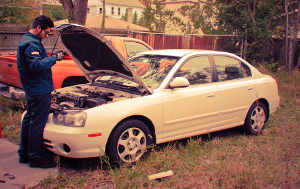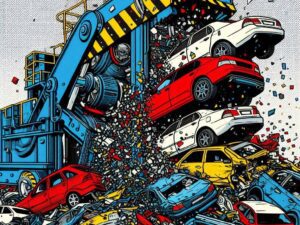Motorists Skipping Elements of MOTs

In the wake of the ongoing cost of living, new data reveals that a significant number of UK drivers are cutting corners on vehicle safety to save money. Shockingly, 20% of drivers under 44 admitted skipping their MOT or neglecting some of the legal requirements on their vehicle.
An MOT ensures the roadworthiness of our 42 million vehicles.
Across all age groups, 10% of drivers confessed to skipping their MOT, and nearly a fifth delayed essential repairs and stopped servicing to cut costs. Among the under-25s, over a third admitted to neglecting repairs.
Skipping vehicle maintenance with your local motor trade auto technician, tyre dealer, or garage mechanic may seem like a good way to save money. However, it generally leads to bigger problems later. Over the past 12 months, 6 out of 10 drivers faced unexpected repair costs, with an average repair bill of over £600.
Nearly 75% of drivers reported that car servicing costs have increased compared to the previous year, up from 69% in 2023. This financial strain is particularly evident among younger drivers, with half of those under 25 saying they would struggle to afford a £500 repair bill.
What are MOT categories?
For those preparing for their annual MOT, understanding the inspection process can help ensure your vehicle passes. MOT Technicians assess your vehicle across eleven key categories:
CAT 0: Vehicle Identification: Ensuring registration plates and VINs are correct.
CAT 1: Brakes: Inspecting the braking system for functionality and wear.
CAT 2: Steering: Checking the steering column and power steering components.
CAT 3: Visibility: Assessing windows, mirrors, and wiper systems.
CAT 4: Lamps & Electricals: Testing lights, reflectors, and electrical equipment.

CAT 5: Axles, Wheels, & Suspension: Examining tyres, wheel bearings, and suspension systems.
CAT 6: Body & Structure: Ensuring the vehicle’s frame and attachments are secure and undamaged.
CAT 7: Other Equipment: As cars have developed to include more technology and safety features, they need to be checked.
CAT 8: Nuisance: Checking for noise, emissions, and leaks, any defects here result in immediate failure.
CAT 9: Supplementary tests for buses and coaches
CAT 10: Seat Belts: Ensuring all seat belts are operational and secure.
The rising cost of vehicle ownership is challenging for everyone. Cutting corners on safety is never the answer. Regular maintenance and repairs are crucial for ensuring road safety and avoiding further financial burdens.






